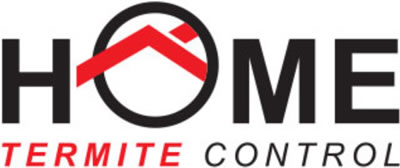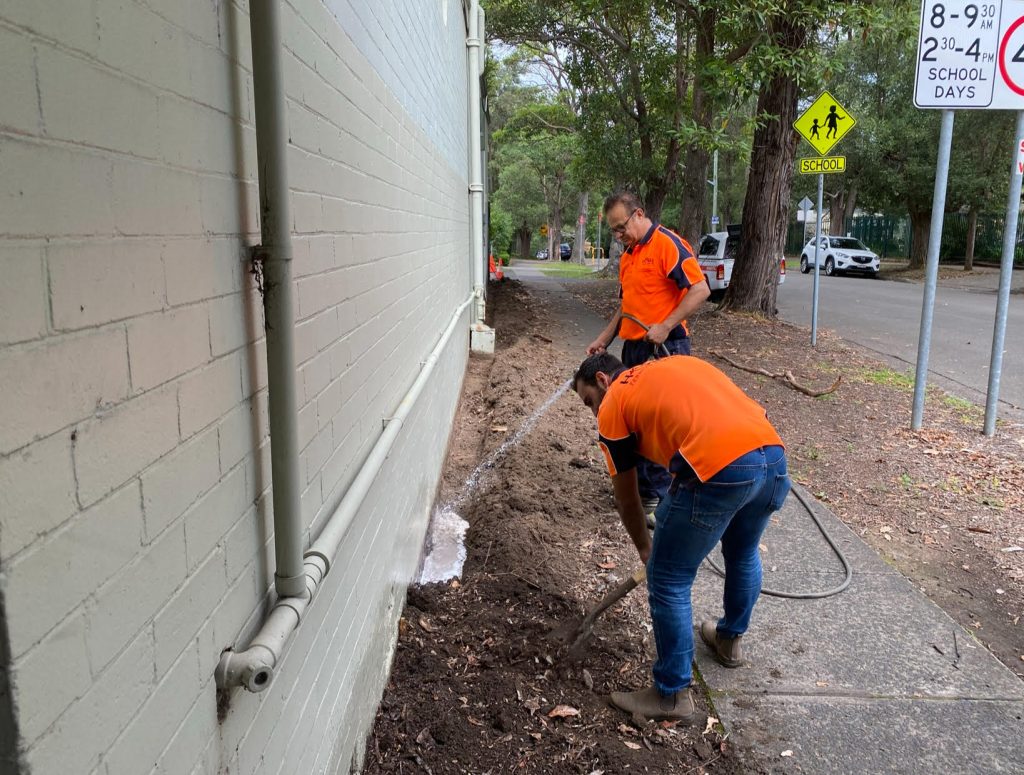Dealing with termites? Effective termite control is key to protecting your home. This article covers how to spot early signs of termites, various treatment methods, and ways to prevent future infestations.
Key Takeaways
-
Early detection of termite infestations is crucial for minimizing damage and repair costs, emphasizing the need for regular inspections.
-
Various termite control solutions are available, including chemical barriers, baiting systems, and fumigation, each suited for different infestation scenarios.
-
Preventative measures, such as proper landscaping and moisture management, are essential in reducing the risk of termite infestations and maintaining long-term home protection.
https://youtu.be/JNJmI6fkfcA?si=RQdxeTnv6aY8njsw
Understanding Termite Infestation
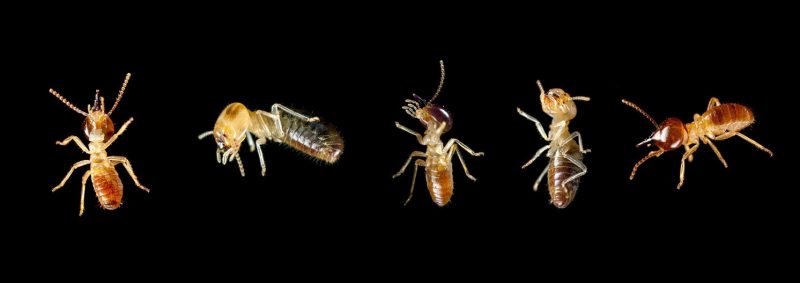 Nasutitermes workers and a soldier. The pointy head on the right is the soldier.
Nasutitermes workers and a soldier. The pointy head on the right is the soldier.
Termites, often called ‘white ants,’ are a serious threat to homeowners due to their ability to cause extensive damage without immediate detection. These pests consume cellulose-rich materials such as wood and paper, which can compromise the structural stability of buildings if left untreated. Their destructive nature is why they are aptly named ‘silent destroyers’—they can inflict severe damage to structures without being noticed.
Identifying termites early helps to minimize damage and reduce the high costs of control and repairs. If termites are allowed to wreak havoc unchecked, they can hollow out timber from the inside, leading to potential structural failure and expensive repairs. Therefore, termite inspections and proactive protection strategies are vital for homeowners.
Knowing the behaviour and diet of termites is crucial in preventing infestations. Termite colonies can contain many thousands of workers, constantly foraging for food and expanding their nests. Homeowners can take necessary steps to prevent termite problems by understanding what attracts termites and how they operate.
Signs of Termite Activity
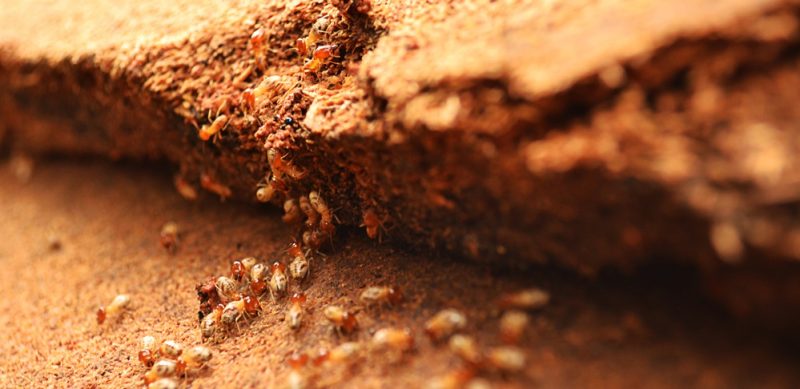
Nasutitermes termites are looking for food sources.
Recognizing the signs of termite activity early can save homeowners from significant damage and costly repairs. One of the most common indicators is a hollow sound in timber when tapped, suggesting the wood has been compromised from within. Additionally, bubbling paint on wood or gyprock can be a red flag that termites feed underneath the surface.
Mud tunnels, often found in subfloor areas, are another telltale sign of a termite infestation. These tunnels serve as highways for termites, allowing them to travel from their nests to food sources without exposure. Uneven flooring can also indicate underlying termite damage, warranting a closer inspection.
Other signs include hollow sounds within wall cavities or visible termite colonies. Early recognition of these indicators allows for timely action and effective termite treatments. Regular inspections can detect such signs and prevent further damage.
Comprehensive Termite Inspections
Hiring a licensed pest control technician ensures accurate detection of termite infestations and damage assessment. Frequent inspections are essential as termites can cause significant damage before being detected. They are designed to detect early signs of termite activity, allowing for timely intervention.
During a termite inspection, the property’s exterior and interior are examined for signs of termites. Inspectors use advanced tools, such as moisture meters, to identify potential termite threats that might not be visible to the naked eye. Accredited termite inspectors typically take 1 to 2 hours to conduct a full inspection for a 3-4 bedroom house, ensuring no area is left unchecked.
Post-inspection, a detailed report outlining the findings and corrective measures is provided. This report helps homeowners grasp the extent of the infestation and the necessary steps for management and prevention. Regular inspections are crucial for maintaining your home’s integrity and avoiding costly repairs.
Effective Termite Treatments
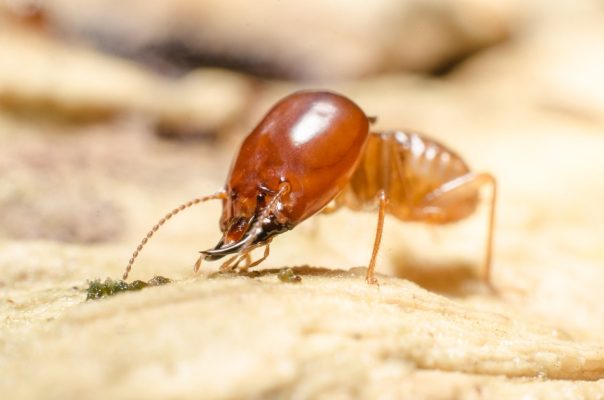
Termite soldier with a big head and mandibles.
Effective treatments are vital for protecting properties from damage caused by infestations. The proper treatment depends on the specific situation, including the type of termite and the infestation level. Various methods, including chemical barriers, baiting systems, and fumigation, can be employed to eliminate termites.
Each treatment method has its unique advantages and is suitable for different scenarios. Knowing these methods helps homeowners decide on the best termite protection approach. In the subsequent sections, we will delve into the specifics of these treatments.
Chemical Barriers
Chemical barrier treatments involve applying a liquid chemical to the soil around the property, creating a protective zone that prevents termites from entering. These barriers utilize substances like CHLORANTRANILIPROLE, Bifenthrin, Imidacloprid, and Fipronil, which are effective in targeting termite colonies. The chemicals can either kill termites on contact or deter them from crossing the treated area.
Termites interact with the treated soil unknowingly, picking up toxic chemicals as they move through. This method creates a pesticide boundary around the structure, effectively preventing an infestation. Ingested dusted insecticides can be distributed among the termite colony, enhancing control.
A termite reticulation system, with its network of underground pipes, can distribute termiticides throughout the property. These systems should be reapplied every 3-5 years to ensure ongoing protection. Chemical barriers offer an effective and long-lasting solution for termite management.
Baiting Systems
Baiting systems involve placing stations with treated food around the property to attract termites and eliminate entire colonies over time. Coptotermes acinaciformis, a common termite species, responds strongly to bait, making these systems very effective. Worker termites take the bait back to their nests and feed it to the colony, allowing the toxic effects to spread.
The primary advantage of bait stations is their ability to kill an attacking colony even when the nest site is unknown. However, baiting does not provide a physical barrier, so termites can still access the structure during the process. Despite this, baiting remains a valuable tool in termite management.
Fumigation
Fumigation controls and eliminates termite infestations using gas. This process is particularly effective for extensive drywood termite infestations, where traditional methods are inadequate. The gas penetrates deep into wood, ensuring hidden areas are reached and treated.
Fumigation’s effectiveness lies in its ability to reach all areas of the structure, targeting drywood termite colonies wherever they may hide. Fumigation is a powerful tool in the arsenal against termites, providing comprehensive termite protection when other methods fall short.
Physical Termite Barriers
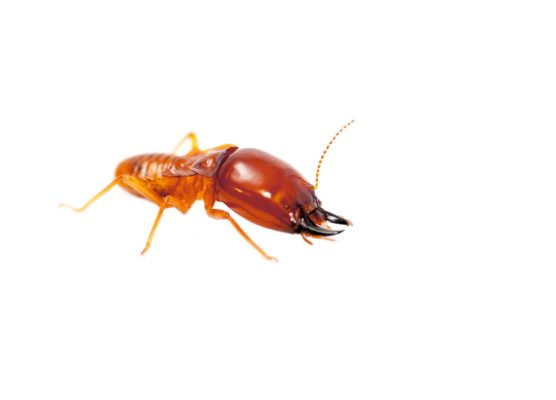
Like their ancestors millions of years ago, termites still look like cockroaches.
A physical termite barrier, installed around the building’s perimeter and at pipe penetrations, blocks termite entry. These barriers can be flexible, thick polymer sheets containing insecticides, serving as both physical and chemical deterrents. Stainless steel mesh barriers use small openings to prevent termites from passing through, secured to slabs or masonry.
Metal ant capping, although used in older constructions, can be less effective if not properly installed due to rusting. Aggregates like crushed granite can also be used as barriers, though they are less common due to cheaper options. Termcoat, a sealant, creates a termite-resistant zone and allows for inspection in a single application.
Termite collars are installed prior to pouring concrete to protect hidden penetration points in slab construction. Foams and sealants effectively fill construction gaps while also acting as termite repellents. Utilizing physical barriers as part of a comprehensive termite management system can significantly reduce the risk of infestations.
Preventative Measures for Termite Protection
Preventative measures are crucial for protecting homes from termite infestations. One effective strategy is to avoid placing garden beds close to the home, as constant watering can create conditions favorable for termites. Fixing leaks and preventing moisture build-up are essential steps to reduce termite attraction to the home.
Firewood and unused timber should be stored away from the home to prevent creating a pathway for termites. Keeping weep holes clear from soil and vegetation is necessary to prevent easy access for termites. Additionally, using termite-resistant mulch can help reduce the likelihood of attracting termites to the property.
Hiring pest control experts can save costs over time by reducing the likelihood of recurring termite problems. These professionals can implement and maintain preventive measures that adapt to changing conditions around the property. Regular expert inspections are key to long-term termite protection.
High-Risk Areas for Termite Infestations
Certain areas of homes are more prone to termite infestations due to moisture accumulation and other conducive conditions. Concealed wet areas, such as bathrooms and kitchens, frequently harbor termite activity. Roof voids are often favored nesting sites for termites due to warmth and humidity.
Sub floors, typically neglected, can harbor termites if they have poor ventilation and drainage. Scheduled inspections help identify potential entry points and high-risk areas around a property, enabling timely and effective management. In termite-prone areas, properties may require more frequent evaluations to ensure ongoing protection.
Garden mulch and vegetation near a home can retain moisture and serve as additional food sources for termites. Moist soil, mulch, old tree stumps, and irrigation sprinkler heads are recommended locations for installing in-ground termite stations. Managing these high-risk areas is crucial for effective termite control.
Professional Termite Management Systems
Professional pest control companies use specialized tools and techniques for precise treatment applications, minimizing health risks. A record of regular inspections can enhance a property’s marketability, assuring potential buyers of its condition.
When selecting a pest control service, verify that they hold a valid license and relevant certifications for legal compliance and professionalism. Thorough background checks on a pest control service confirm their reliability and reputation in the industry. Inquiring about the pest extermination methods used by the service ensures they are proven and safe.
Importance of Regular Inspections
Regular home inspections can significantly decrease the risk of extensive damage and related costs. Neglecting regular inspections can lead to major structural issues requiring costly repairs or even demolitions. Homeowners should conduct regular inspections to detect termite issues early and avoid extensive damage.
Regular termite inspections are vital for the prevention of severe structural damage and costly repairs, as they allow for early detection of infestations. Scheduling inspections with a professional termite inspection service ensures thorough inspection and detailed reporting, helping homeowners maintain their properties.
Choosing the Right Termite Control Service
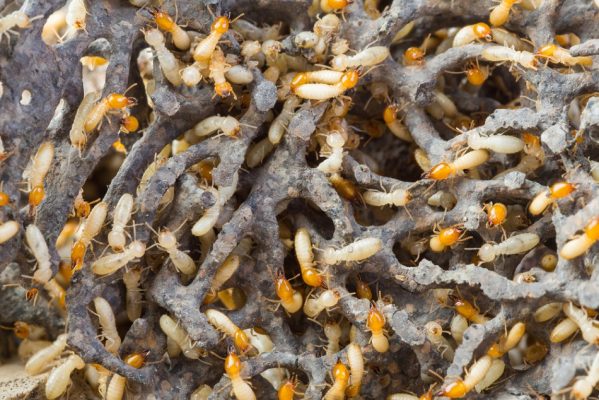
Termite soldiers have yellow heads, whilst workers have creamy colour heads.
Selecting a service with extensive pest infestation experience can lead to more effective treatments and long-term protection. Customer reviews and testimonials offer insights into service quality and help evaluate the provider’s effectiveness. Professional services provide peace of mind, ensuring compliance with local pest management regulations and standards.
Post-inspection, a detailed report covers observations of termite activity and treatment recommendations. This documentation allows homeowners to make informed decisions and ensures the chosen termite control measures are effective and tailored to their needs.
Summary

In summary, protecting your home from termites involves understanding their threat, recognizing early signs of activity, and conducting regular, comprehensive inspections. Effective treatments such as chemical barriers, baiting systems, and fumigation, combined with physical barriers and preventative measures, form a robust defence against these silent destroyers.
Homeowners can safeguard their properties from extensive damage and costly repairs by choosing a reliable termite control service and maintaining regular inspections. Don’t wait for termites to attack—take proactive steps to ensure your home remains safe and structurally sound. Protect your investment and enjoy peace of mind, knowing that your home is termite-free.
Frequently Asked Questions
What are the common signs of a termite infestation?
Common signs of a termite infestation include hollow-sounding timber, bubbling paint, mud tunnels, and uneven flooring. If you notice these indicators, it is crucial to arrange for an inspection immediately.
How often should I have my home inspected for termites?
To ensure ongoing protection against termites, it is recommended that your home be inspected at least once a year, with more frequent inspections in termite-prone areas. Regular assessments can help catch any issues early.
What is the most effective termite treatment?
Depending on the building’s construction and location, the most effective termite treatment often involves chemical barriers, baiting systems, and fumigation tailored to the specific type and extent of the infestation. Consult a pest control professional to determine the best approach for your situation.
How can I prevent termites from infesting my home?
To prevent termites from infesting your home, keep garden beds away from the structure, fix leaks, store firewood away from the house, and ensure weep holes are clear. Additionally, consider engaging professional pest control for long-term prevention strategies.
Why should I choose a professional termite control service?
Choosing a professional termite control service ensures you benefit from their expertise, advanced tools, and effective methods, which provide thorough inspections and long-term protection against infestations. This proactive approach minimizes risks and ensures compliance with local regulations.
